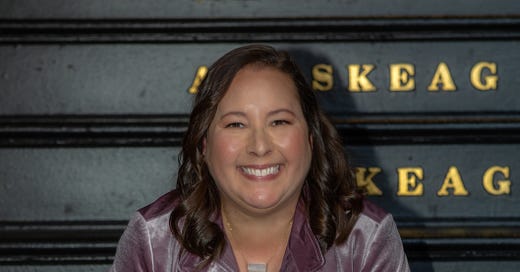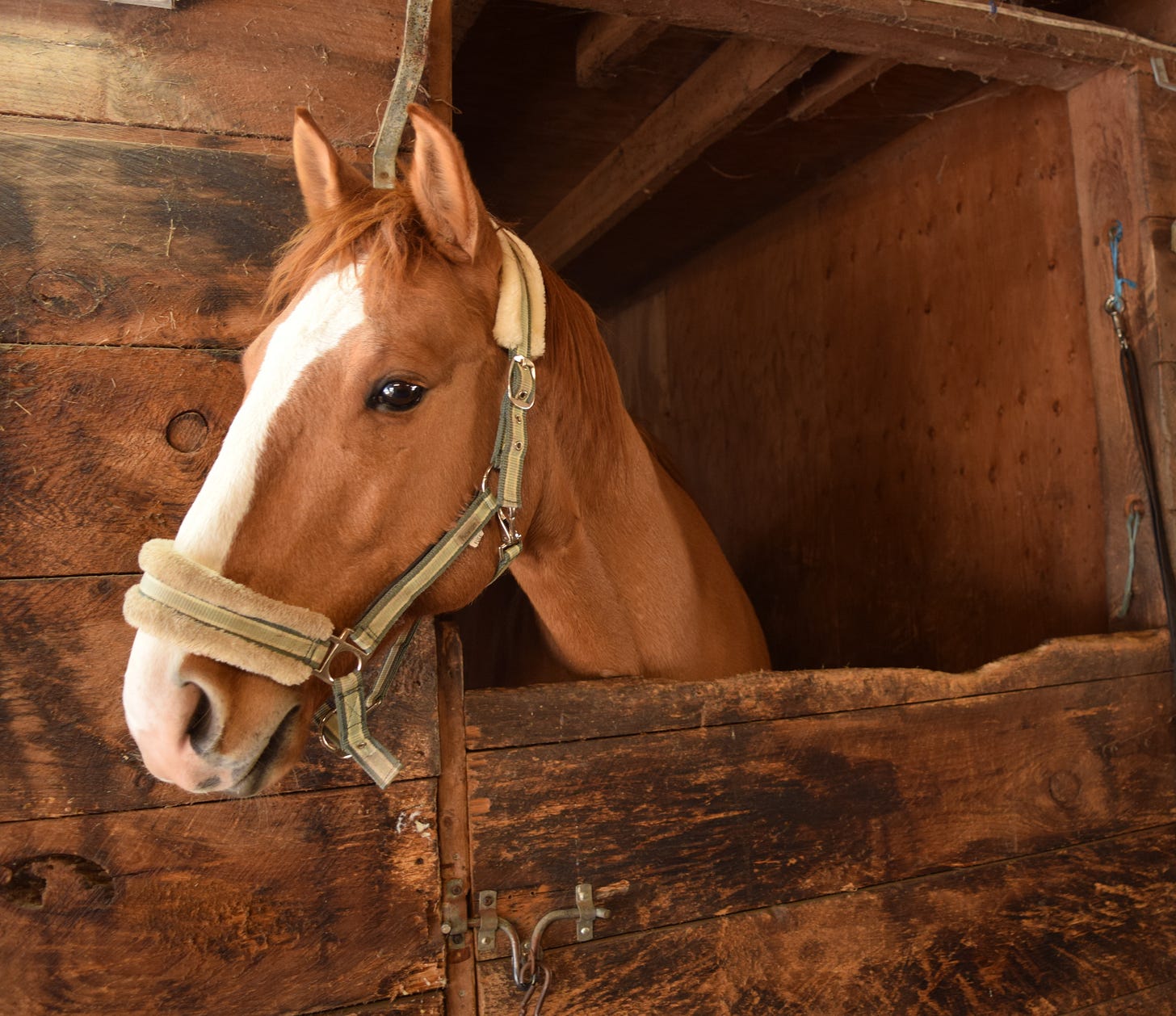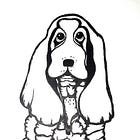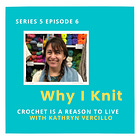Meet Writer/Creative Tricia Easter in this Art and Mental Health Interview
"The biggest benefit of creating is the joy I feel. I’m learning that joy is the panacea to fear, so the more I create, the more joy I feel, helping to edge out fear."
When you visit the about page of
by , one of the first things that you learn is:“After living with debilitating anxiety for 20 years Tricia Easter is passionate about destigmatizing mental health issues through open and honest conversations.”
I am so grateful for everyone who is open and honest about their experiences with anxiety and other mental health challenges in whatever way is right for them. And Tricia has a lot of wonderful insights to share with us. In today’s interview
Hi Tricia, thank you so much for being here today. Before we dig into the rich stuff, what's the first thing that you would like us to know about you by way of introduction?
I’ve never really considered myself an artist, but I’m passionate about creating. I’m intentional about what I create and most of it is for myself, except for my writing. I share my writing to help people who have anxiety.
I tend to think that we are all artists although some of us use the term and some do not.
I think the work you’re doing writing to destigmatize anxiety and other mental health conditions is very powerful.
What can you share with us about your own mental health experience?
I had debilitating anxiety for 20 years, starting shortly after I graduated from college. I no longer have anxiety, but if I’m not checking in with myself, I can sometimes feel anxiety on the periphery.
I’m also still working through some PTSD issues and phobias from having anxiety. I tried just about every healing modality from conventional doctors and medication to holistic therapies, only to have my anxiety get progressively worse.
Ultimately, learning to trust myself again—my mind, body, and soul - is what helped turn things around. Creating has helped with this.
That is so powerful. Anxiety can really be immobilizing and it can often shrink your world. I am excited to learn more about how creating has helped you.
I know that you said you don’t really see yourself as an artist but are passionate about creating. Tell us more about your creative journey.
I’ve always dabbled in art and am inspired by nature. I paint with watercolors and am fascinated by the use of water as a medium. I photograph landscapes, flowers, animals, and sometimes people. I grow flowers in my garden and use them to make floral arrangements. I also throw pottery and knit. Lastly, my writing is another way I create where I frequently draw examples from nature as well.
This type of creative life, where creativity infuses so many areas in big and small ways, is really beautiful.
What would you say inspires you to create?
Creating is how I ensure I’m putting myself first. My time spent creating is precious to me and I feel like I’m in this sacred space where I’m connecting to my intuition.
How did you come to writing?
After living with debilitating anxiety for 20 years and then being able to reverse it, I became passionate about sharing my experiences with anxiety and healing it. Because of the mental health stigma, I write openly and honestly about my experiences with anxiety to help break down that stigma and so that others know they are not alone.
I appreciate that so much. The more of us that share our own unique stories, the more information everyone has that can assist with their own sense of validation, worthiness, and healing.
How do you explore anxiety through your writing?
My mental health symptoms and the situations that create the symptoms are what fuel my writing since I write about mental health and anxiety. I take notes about what I’m going through and share my experiences because I believe we sometimes collectively move through similar feelings and situations.
How did anxiety affect the content of the other (non-writing) mediums you create in?
When I had anxiety, I felt like I had this extra sight that allowed me to see the beauty in everything, especially nature. It was almost like everything was electrified. I still appreciate the beauty around me, but now it’s not as heightened, which I’m OK with if it means not having anxiety.
I appreciate you sharing that. Many times our mental health conditions do have a silver lining that allows us to experience beauty/art in a unique way. Some people don’t want to give that up. Others would do anything to feel better mentally. Many of us are somewhere in between. I think it’s an important thing for us to understand about ourselves.
How else is your content affected by your experience?
I’m really drawn to colors I see in nature, especially purple. When I create, whether through my paintings, photographs, or writing, I’m trying to create what feels peaceful and cozy.
Cozy is one of my favorite feelings in the world.
With my painting, pottery, photographs, and knitting – I create art that looks and feels peaceful and soothing. Creating helps to heal my nervous system.
Can you share more about that?
Having anxiety took a toll on my nervous system; creating helps to restore it. However, there are days where I’m dealing with difficult situations that leave me (and my nervous system) spent. It’s hard to create when I’m feeling drained, so I prioritize rest those days instead of pushing myself to create.
Our creative productivity/outflow/flow is so often affected by how well feel isn’t it? How do you navigate that as it relates to anxiety?
Because of anxiety, I have to be careful about doing what’s right for me. Even though my platform might grow faster if I wrote blogs and newsletters more often, I do it every two weeks, so that I still enjoy writing without feeling too much pressure. If I’m staying true and authentic to myself (which healing anxiety has demanded I do), I have to produce in a sustainable way. Otherwise, my writing gets watered down and my mental health declines.
This is such a critical thing to know about ourselves: when does working on our art heal us and when has it reached a tipping point and it is creating potential harms!
In what other ways has creating art hindered or harmed your mental health?
Creating hinders my mental health when perfectionism rears its ugly head, paralyzing me from creating. It’s something I’m working on. Giving myself permission to make mistakes and knowing that mistakes will probably happen helps.
One of the things I love about art is that it can be a safe space to learn to practice skills, like allowing ourselves to make mistakes, that we can then translate to other bigger areas of life.
I think you’ve shared something really interesting here in terms of the catch-22 cycle of creativity and rumination … your mental health/anxiety causes perfectionism and the perfectionism makes it hard to create and then because you’re not creating, you aren’t allowing yourself the healing that comes from creating.
In what other ways is art complicated for you (as opposed to simply pleasurable?)
Art is sometimes complicated. My writing feels complicated when I share it with the world. Does my writing need to validated by others to be of value? If someone doesn’t like my writing, does it mean it’s not good? Am I an artist if my work is not appreciated by others? Creating pushes me to explore these thoughts on self-worth.
Ah, yes. Very relatable. Have you had challenging experiences with people not receiving your writing well?
I’ve noticed that some people I’ve interacted with about my book are nervous around me because they’re afraid I’m going to melt down around them. (That’s not how anxiety worked for me—it was more internal.) While many people have been supportive, there are some people who don’t take my writing seriously because I had anxiety and because they don’t approve of the subject. They see anxiety as being similar to a stressful day, not something that impacts your day-to-day life.
How has your experience with this or with mental health challenges in general affected your identity / sense of self?
I’m not sure if it’s because of anxiety or the lack of confidence that accompanies it, but I often experience imposter syndrome. In the first question you asked me, I realize I’m avoiding calling myself an artist. Even though I’ve written a book and love writing, I also feel weird calling myself a writer.
This is so common. I find that people go through a lot of different stages of calling or not calling themselves a writer/artist.
This is a lot of challenging stuff. But we keep creating because it is also so cathartic. How has are helped heal you?
Creating has been very therapeutic for me. It helps me connect with myself. When I was dealing with anxiety on a daily basis, I lost touch with who I was at my core.
Creating is also a form of self-expression. My writing helps with my mental health as I sift through experiences and events that can cause or feed anxiety. Giving voice to these issues is incredibly healing for me and hopefully for others as well.
The biggest benefit of creating is the joy I feel. I’m learning that joy is the panacea to fear, so the more I create, the more joy I feel, helping to edge out fear.
In what ways have you seen art help others?
I believe there’s healing and magic with all aspects of art. For example, my daughter painted small canvases for each one of us in my family for Christmas. She painted scenes and images that are important to each of us. Not only were her paintings well done (she’s very talented!) and insightful, but her paintings also made each of us feel seen and appreciated for who we are. There’s beauty and healing in that.
I love that. In your own words, what do you think is the relationship between art and mental health?
I believe creating is how we heal and protect our mental health. It’s how we express ourselves and connect to others in ways we might not normally have. Creating gives us time and space to process our feelings and emotions while developing our intuition. There are so many ways to create with intention in our day-to-day lives, such as cooking, decorating, or arranging flowers, to name a few. I believe art and creating can help us heal.
Connect with
here on Substack, which includes a podcast, and also on her website and over on Instagram.Some of my favorite posts from Tricia:
If you read this far, perhaps you liked the work. The work does take work. It only continues with support, so please consider subscribing. My annual rate starts at $10 per year.












Creativity is such a wonderful healer! Thank you for sharing this ✨💛✨
Thank you for the lovely write up, Kathryn!